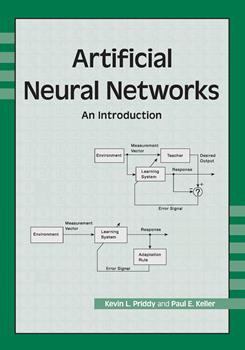
Dr. Kevin L. Priddy, is Technical Advisor, Sensor Exploitation Applications Branch, Sensors Directorate, Air Force Research Laboratory, Wright-Patterson Air Force Base, Ohio. The directorate specializes in developing science and technology for superior Air Force systems in the areas of intelligence, surveillance, reconnaissance, precision engagement and electronic warfare. He directs the technical efforts of the Sensor Exploitation Applications Branch in performing research and transitioning technology to meet Air Force needs.
AWARDS AND HONORS
2004, Jacobs Sverdrup, Senior Technical Award
2007, Air Force Research Laboratory Senior Leadership Award
2008, Sensors Directorate Senior Leadership Award
2008, Sensors Directorate Director’s Cup Team Award: Project AngelFire
2009, Air Force Research Laboratory, Commander’s Cup Team Award: Project AngelFire
2009, Air Force STEM Award Exploratory or Advanced Technology Development Team: Angel Fire Team
2010, Sensors Directorate, Director’s Cup, Senior Individual
2011, Air Force Research Laboratory, Commander’s Cup, Senior Individual
2011, Air Force Achievement Medal
BOOKS
“Artificial Neural Networks: An Introduction,” Kevin L. Priddy and Paul E. Keller, SPIE-International Society for Optical Engineering, October 2005, ISBN-13:9780819459879
PATENTS
United States Patent 5,850,625; “Sensor Fusion Apparatus and Method,” December 15, 1998
United States Patent 6,889,165; “Application Specific Intelligent Microsensor,” May 3, 2005.
United States Patent 6,995,655 “Method of simultaneously reading multiple radio frequency tags, RF tags, and RF reader,” February 7, 2006.
PROFESSIONAL MEMBERSHIPS AND ASSOCIATIONS
Senior Member IEEE
Member SPIE
Tau Beta Pi
Eta Kappa Nu
PROFESSIONAL CERTIFICATIONS
SPRDE-Science and Technology Manager, Level III
SPRDE-Systems Engineer, Level III
AWARDS AND HONORS
2004, Jacobs Sverdrup, Senior Technical Award
2007, Air Force Research Laboratory Senior Leadership Award
2008, Sensors Directorate Senior Leadership Award
2008, Sensors Directorate Director’s Cup Team Award: Project AngelFire
2009, Air Force Research Laboratory, Commander’s Cup Team Award: Project AngelFire
2009, Air Force STEM Award Exploratory or Advanced Technology Development Team: Angel Fire Team
2010, Sensors Directorate, Director’s Cup, Senior Individual
2011, Air Force Research Laboratory, Commander’s Cup, Senior Individual
2011, Air Force Achievement Medal
BOOKS
“Artificial Neural Networks: An Introduction,” Kevin L. Priddy and Paul E. Keller, SPIE-International Society for Optical Engineering, October 2005, ISBN-13:9780819459879
PATENTS
United States Patent 5,850,625; “Sensor Fusion Apparatus and Method,” December 15, 1998
United States Patent 6,889,165; “Application Specific Intelligent Microsensor,” May 3, 2005.
United States Patent 6,995,655 “Method of simultaneously reading multiple radio frequency tags, RF tags, and RF reader,” February 7, 2006.
PROFESSIONAL MEMBERSHIPS AND ASSOCIATIONS
Senior Member IEEE
Member SPIE
Tau Beta Pi
Eta Kappa Nu
PROFESSIONAL CERTIFICATIONS
SPRDE-Science and Technology Manager, Level III
SPRDE-Systems Engineer, Level III
View contact details


